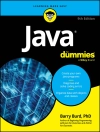What is this book about?Visual Basic .NET is the latest version of the most widely usedprogramming language in the world, popular with professionaldevelopers and complete beginners alike. This book will teach you Visual Basic .NET from first principles. You’ll quickly and easilylearn how to write Visual Basic .NET code and create attractivewindows and forms for the users of your applications. To get youstarted on the road to professional development, you’ll also learnabout object-oriented programming, creating your own controls, working with databases, creating menus, and working withgraphics.This second edition has been thoroughly tested on the fullrelease version of .NET. The book is written in the proven Wroxbeginning style with clear explanations and plenty of code samples.Every new concept is explained thoroughly with Try It Out examplesand there are end-of-chapter questions to test yourself.What does this book cover?In this book, you will learn how to* Install Visual Basic .NET* Write Visual Basic .NET code* Understand what the .NET Framework is and why it’simportant* Control the flow through your application with loops andbranching structures* Create useful windows and screens* Create your own menus* Gain a complete understanding of object-orientedprogramming* Work with graphics* Create your own controls* Access databases with ADO.NET* Create applications for the Web Who is this book for?This book is aimed at readers who wish to learn to program using Visual Basic .NET. It assumes you have no prior experience ofprogramming, but moves at a fast enough pace to be interesting ifyou have programmed in another language.
Table of Content
Introduction.Chapter 1: Welcome to Visual Basic .NET.Chapter 2. Writing Software.Chapter 3. Controlling the Flow.Chapter 4. Building Objects.Chapter 5. The Microsoft .NET Framework.Chapter 6. Working with Data Structures.Chapter 7. Building Windows Applications.Chapter 8. Displaying Dialog Boxes.Chapter 9. Creating Menus.Chapter 10. Advanced Object-Oriented Techniques.Chapter 11. Debugging and Error Handling.Chapter 12. Building Class Libraries.Chapter 13. Creating Your Own Custom Controls.Chapter 14. Programming Custom Graphics.Chapter 15. Accessing Databases.Chapter 16. Database Programming with SQL Server and ADO.NET.Chapter 17. Web Forms.Chapter 18. Visual Basic .NET and XML.Chapter 19. Web Services.Appendix A. Where to Now?Appendix B. Exercise Answers.Index.
About the author
Mathew Reynolds After working with Wrox Press on a number ofprojects since 1999, he is now an in-house author for Wrox Presswriting about and working with virtually all aspects of Microsoft.NET. He’s also a regular contributor to Wrox’s ASPToday and C#Today, and Web Services Architect. He lives and works in North London and can be reached on [email protected] Blair is Web Application Architect specializingin Microsoft Web Technologies, focusing on emerging technology andits impact on business and development. Key areas that he hashelped clients evaluate include: streamlining the electronicbusiness process, expanding access to vital information, andcreating usable systems. He now works as a Senior Consultant for SEI-Information Technology. Besides his consulting work, he hasalso co-authored Professional ASP XML, Beginning Visual Basic.NET, and Professional VB.NET, all published by Wrox Press Ltd.Richard has a dual concentration bachelor’s degree from the University of Michigan in English Literature and Theatre, so notonly is he a Web Architect, he could play one on TV. Richardwelcomes qu estions and comments at [email protected] Crossland is co-author of Professional Windows DNA, Professional VB.NET, and Beginning VB.NET. He is currently working at Yokogawa Electric Corporation in the UK, where he is happily involved with thecreation of software for the Batch manufacturing industry. Jonathanhas been working in and out of various software technologies foreight years now, and spends most of his time in C# and ASP.NET.Jonathan also works with VB, VB.NET, and web technologies such as Java Script, DHTML, XML, ASP, and of course, writing Web Services.Thearon Willis began his career in computers in 1980 as acomputer operator. During the fall of 1980 he took a course in BASIC programming using the Radio Shack TSR-80 computer and hasbeen hooked on programming ever since.After learning the BASIC language, Thearon moved on to learn COBOLand began writing programs to help automate some of his daily tasksas a computer operator. Advancing his career, Thearon became an Operations Analyst and learned several other languages to assist inhis job. In 1989, Thearon moved into Systems Programming andstarted programming in S370 assembler language. He coded batchprograms in assembler language and then moved on to code CICSprograms. The Help Desk and Network Operations used these batch andon-line programs to perform some of their daily tasks, such asmonitoring CICS printers and polling sales. During this time, hestarted working with relational databases on the mainframe andimmediately saw the benefits that relational databases provided.Between the years of 1988 and 1993, Thearon learned several moreprogramming languages, which include QBASIC, Pascal and C++.Thearon decided that he enjoyed programming so much that heswitched his career path and became a developer full time. Thefirst application that Thearon worked on was written in assemblerlanguage and included over 70 assembler programs. To help automatesome of the tasks that were performed by the department that usedthis application, he wrote several programs in Visual Basic. One ofthese programs read and processed data from message queues thatwere populated from the mainframe and performed automatedbalancing. Thearon currently works as a senior consultant anddevelops intranet applications using ASP, DHTML, XML, Java Script, VBScript, VB COM components, and SQL Server. He lives with his wife Margie and daughter Stephanie in the Raleigh, North Carolinaarea.











